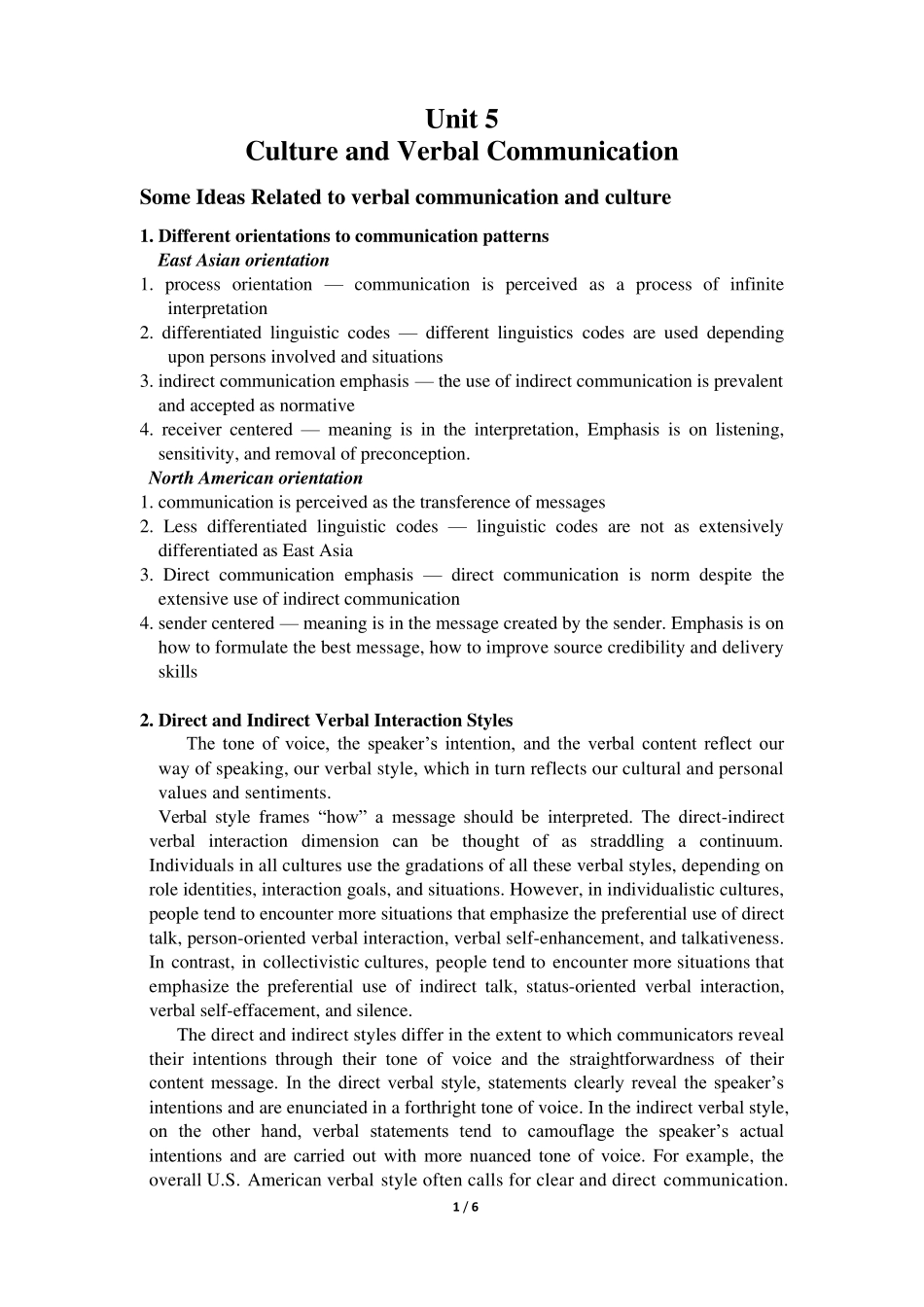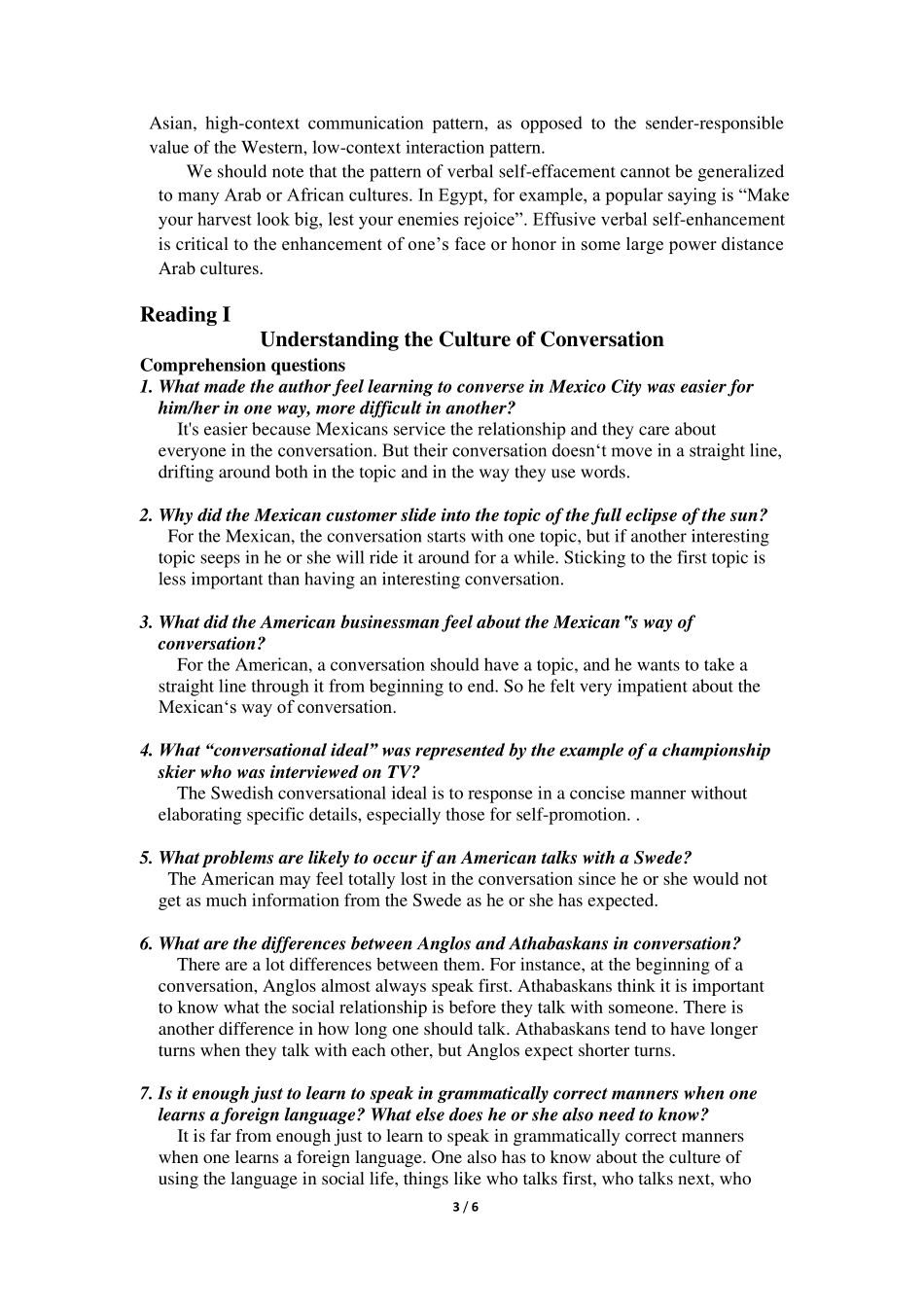1 / 6 Unit 5 Culture and Verbal Communication Some Ideas Related to verbal communication and culture 1. Different orientations to communication patterns East Asian orientation 1. process orientation — communication is perceived as a process of infinite interpretation 2. differentiated linguistic codes — different linguistics codes are used depending upon persons involved and situations 3. indirect communication emphasis — the use of indirect communication is prevalent and accepted as normative 4. receiver centered — meaning is in the interpretation, Emphasis is on listening, sensitivity, and removal of preconception. North American orientation 1. communication is perceived as the transference of messages 2. Less differentiated linguistic codes — linguistic codes are not as extensively differentiated as East Asia 3. Direct communication emphasis — direct communication is norm despite the extensive use of indirect communication 4. sender centered — meaning is in the message created by the sender. Emphasis is on how to formulate the best message, how to improve source credibility and delivery skills 2. Direct and Indirect Verbal Interaction Styles The tone of voice, the speaker‟s intention, and the verbal content reflect our way of speaking, our verbal style, which in turn reflects our cultural and personal values and sentiments. Verbal style frames “how” a message should be interpreted. The direct-indirect verbal interaction dimension can be thought of as straddling a continuum. Individuals in all cultures use the gradations of all these verbal styles, depending on role identities, interaction goals, and situations. However, in individualistic cultures, people tend to encounter more situations that emphasiz...


